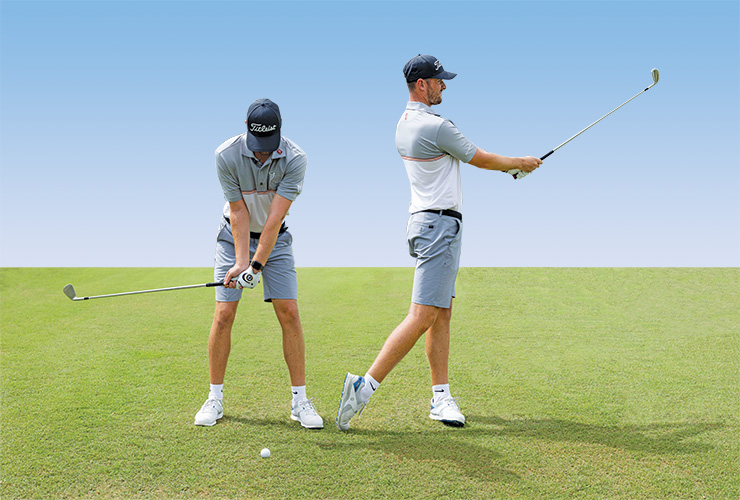By Euan Bowden
Throughout the golf swing it is crucial to remain balanced in order to control the strike and stabilise the clubface. To remain balanced in the golf swing, we need to ensure that our four balance points are aligned and, in particular, the top and bottom of our spine.
Here at the Academy, we see too many people who lose control of this in the downswing which can often lead to poor strikes and the clubface becoming very unstable. This can often be a reaction to something that has happened in the backswing so it would be worth looking at previous videos with Golf Digest Middle East to make sure you are correctly rotating the body in the backswing.
MORE: Why solid putting starts with a sound set-up
Typically, people will let the top of the spine drop behind the bottom of the spine in the downswing which can move your low point back before the ball and cause you to catch the ground before the ball. As a reaction golfers will pull their arms up through the ball to try and ensure the strike and create the ‘chicken wing’.
A good exercise for this is to feel as though you are hitting low ‘punch/driven’ shots where you finish with your hands as close to the target as you can. In order for your hands to finish as close to the target as possible with good extension through the ball, you must keep your body continuing forward, aligning the balance points and the top and bottom of your spine. Throughout this exercise, your arms should feel passive and your body moving forward will very much be in control of your hands and arms. At the end of the exercise, you should notice yourself more forward over your lead foot with your arms extended in front of you towards the target, level with your chest.
This idea of the balance points (top and bottom of your spine) staying aligned throughout, and practice low punch shots will encourage a more stable clubface and better control of your strike.
[divider] [/divider]
Euan Bowden is a PGA teaching professional at Dubai Creek Golf & Yacht Club’s Peter Cowen Academy Dubai.









